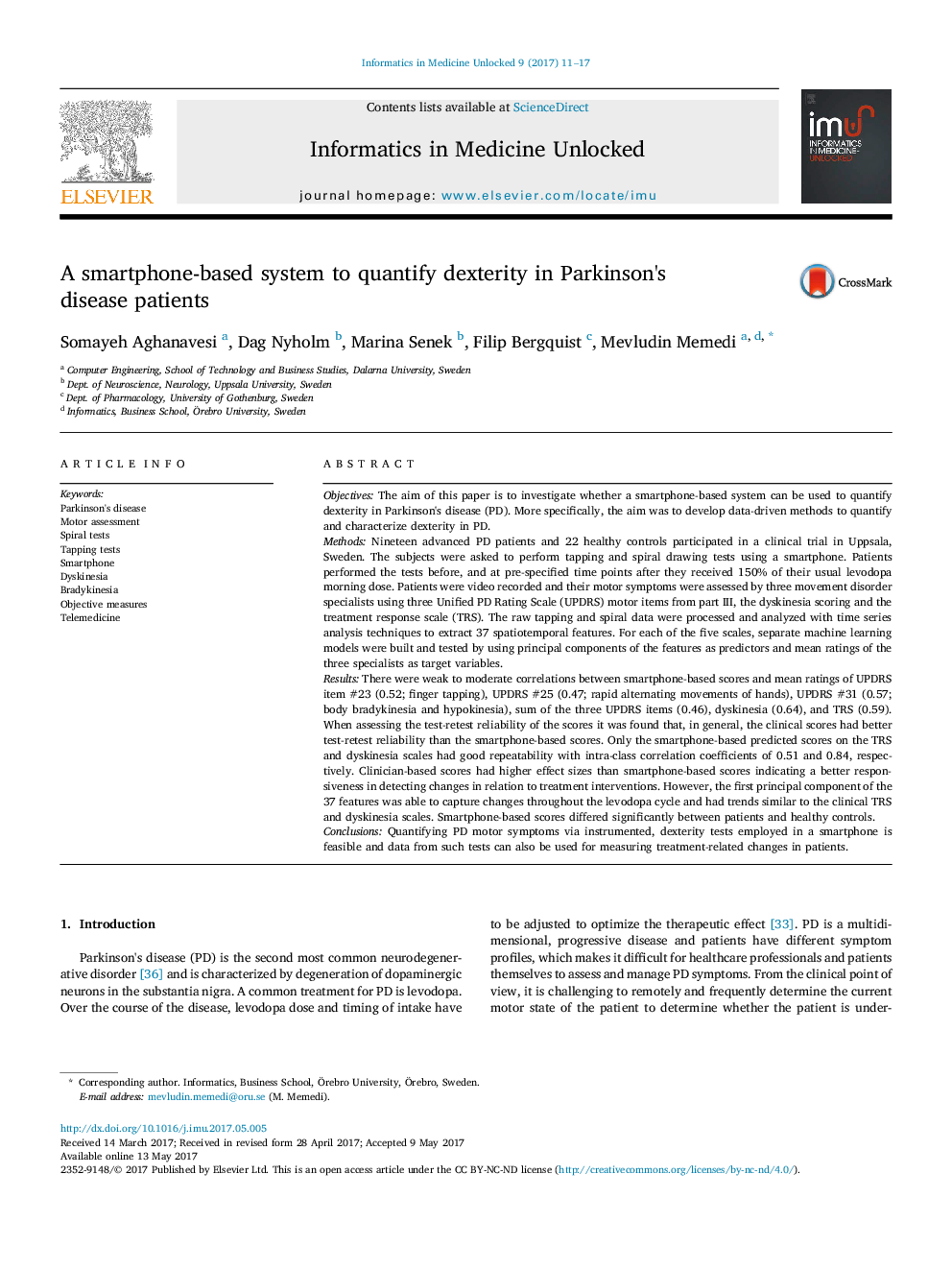| کد مقاله | کد نشریه | سال انتشار | مقاله انگلیسی | نسخه تمام متن |
|---|---|---|---|---|
| 4960243 | 1446425 | 2017 | 7 صفحه PDF | دانلود رایگان |
ObjectivesThe aim of this paper is to investigate whether a smartphone-based system can be used to quantify dexterity in Parkinson's disease (PD). More specifically, the aim was to develop data-driven methods to quantify and characterize dexterity in PD.MethodsNineteen advanced PD patients and 22 healthy controls participated in a clinical trial in Uppsala, Sweden. The subjects were asked to perform tapping and spiral drawing tests using a smartphone. Patients performed the tests before, and at pre-specified time points after they received 150% of their usual levodopa morning dose. Patients were video recorded and their motor symptoms were assessed by three movement disorder specialists using three Unified PD Rating Scale (UPDRS) motor items from part III, the dyskinesia scoring and the treatment response scale (TRS). The raw tapping and spiral data were processed and analyzed with time series analysis techniques to extract 37 spatiotemporal features. For each of the five scales, separate machine learning models were built and tested by using principal components of the features as predictors and mean ratings of the three specialists as target variables.ResultsThere were weak to moderate correlations between smartphone-based scores and mean ratings of UPDRS item #23 (0.52; finger tapping), UPDRS #25 (0.47; rapid alternating movements of hands), UPDRS #31 (0.57; body bradykinesia and hypokinesia), sum of the three UPDRS items (0.46), dyskinesia (0.64), and TRS (0.59). When assessing the test-retest reliability of the scores it was found that, in general, the clinical scores had better test-retest reliability than the smartphone-based scores. Only the smartphone-based predicted scores on the TRS and dyskinesia scales had good repeatability with intra-class correlation coefficients of 0.51 and 0.84, respectively. Clinician-based scores had higher effect sizes than smartphone-based scores indicating a better responsiveness in detecting changes in relation to treatment interventions. However, the first principal component of the 37 features was able to capture changes throughout the levodopa cycle and had trends similar to the clinical TRS and dyskinesia scales. Smartphone-based scores differed significantly between patients and healthy controls.ConclusionsQuantifying PD motor symptoms via instrumented, dexterity tests employed in a smartphone is feasible and data from such tests can also be used for measuring treatment-related changes in patients.
Journal: Informatics in Medicine Unlocked - Volume 9, 2017, Pages 11-17
